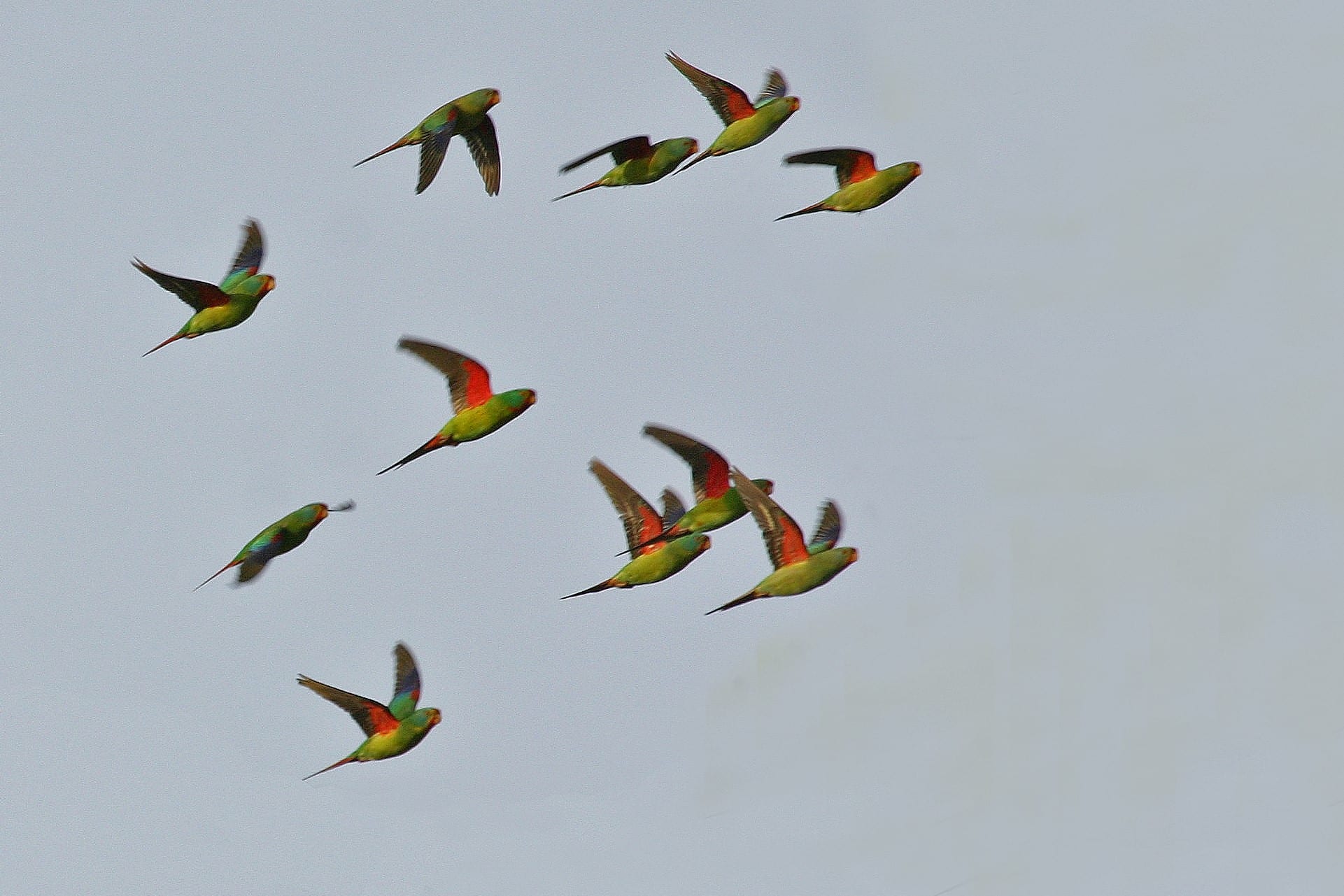
News
Tracking Swift Parrots to save their habitat
As a wildlife researcher, I have dedicated much of my career to studying the critically endangered Swift Parrot. Since founding Wildlife Drones, I am glad that I can contribute to their conservation even further. This winter, Wildlife Drones is working with the Riverina Local Land Services to track swift parrots throughout their winter range.
Each year, swift parrots migrate from Tasmania to mainland Australia to feed on winter-flowering gum trees. But due to Australia’s highly variable rainfall and drought cycles, different trees will flower in different years. As a result, swift parrots migrate to different areas across their winter range in order to find food. However, the deforestation of these trees is making it even harder for swift parrots to find adequate food. This in turn, is affecting their ability to fatten up and migrate back to Tasmania to breed.
Understanding their movements
Much of my research has focused on understanding the dynamic movements of swift parrots throughout their winter range. This has previously involved fitting them with radio-transmitters and tracking their movements on foot. But because they move so quickly throughout the landscape, tracking them was almost impossible.
With Wildlife Drones, we now have the ability to actively track their movements and rapidly search large landscapes for them. This project will focus on collecting swift parrot movement data within the Box-Ironbark Woodlands of the Riverina, NSW. Data collected will help identify important areas of habitat to protect on both public and private property. This data will also help inform habitat restoration work as part of the NSW Environmental Trust’s Saving Our Species project.

